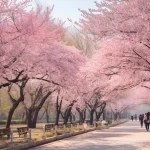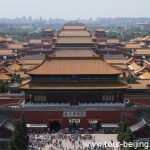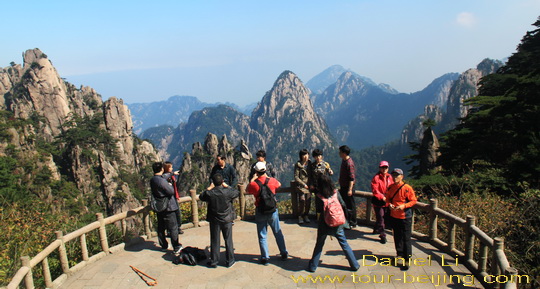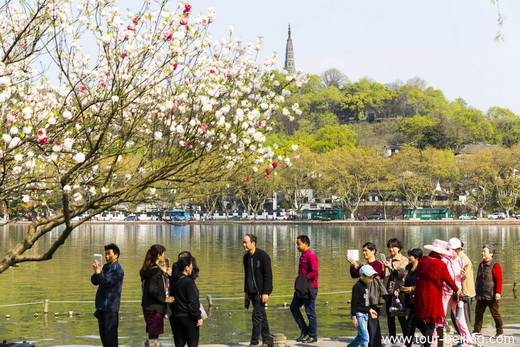Welcome to a journey through the captivating realm of China! This guide, inspired by the insightful resources from Tour Beijing, is a window into the fascinating facets of this ancient land.
China, a blend of rapid modern growth and rich historical depth, offers more than just towering skyscrapers and bustling cities. It’s a treasure trove of history, culture, and unique experiences.
While it’s impossible to encapsulate all of China’s wonders in a single read, we’ve curated 10 intriguing facts that will enrich your understanding and appreciation of this remarkable country. Let’s embark on this enlightening exploration!
Before we talk about some little-known facts about China, I’d like to thank Beijing Tour for giving me the opportunity to guest post on this great site. For the tech-minded like me, I recommend checking out the page on electricity in China, to get one step closer to your dream destination with your favourite conveniences!
1. The 3rd Largest Country in the World (by area)
China, the world’s third-largest country by area, presents a tapestry of vast landscapes and diverse terrains. Stretching over approximately 9.6 million square kilometres, it’s a colossal nation, smaller only than Russia and Canada.
This geographical giant is not just about its size; it’s about the diversity it encapsulates within its borders. From the frosty peaks of the Himalayas in the southwest to the sprawling Gobi Desert in the north, China’s topography is as varied as it is vast.
The nation’s sheer size contributes to its climatic diversity, ranging from subtropical in the south to subarctic in the north. This geographical variation fosters a rich blend of flora and fauna, making China a haven for biodiversity. The country’s rivers, like the mighty Yangtze and the Yellow River, are lifelines that have nurtured civilizations for millennia.
2. The Second Largest Population
A recent demographic milestone has seen India surpass China, now holding the title of the world’s most populous country. This shift demotes China to the second spot for the first time since 1950.
India now has a population of 1,425,775,850, surpassing China for the first time. China has 1,425,671,352 people in 2023.
This change is largely attributed to China’s rigorous population control measures, including the one-child policy implemented in the 1980s. These policies have dramatically shaped China’s demographic landscape, leading to a unique population structure that continues to evolve.
The land is home to 56 recognized ethnic groups, each with its unique customs, traditions, and languages, contributing to the rich cultural mosaic that China represents.
In the national population, the male population is 72,339,956, accounting for 51.24%; the female population is 688,438,768, accounting for 48.76%. The sex ratio of total population is 105.07.
17.95% of the population aged 0-14 years; 63.35% of the population aged 15-59 years; 18.7% of the population aged 60 years or above, and 13.5% of the population aged 65 years or above.
The population of Han nationality is 1286.31 million, accounting for 91.11%. The population of ethnic minorities is 125.47 million, accounting for 8.89 percent.
3. Toilet Paper was Invented in China
Imagine a world devoid of toilet paper – a daunting thought, indeed. This everyday essential, often overlooked, traces its origins back to 6th century China.
Though paper had been used for wrapping and padding since the 2nd century BC, its adaptation for personal hygiene is a testament to ancient Chinese innovation.
This seemingly mundane invention revolutionized personal care, highlighting China’s longstanding tradition of pioneering practical solutions to everyday needs.
4. Red Symbolizes Happiness in China
In Chinese culture, the color red reigns supreme. Symbolizing good fortune, joy, and vitality, red is intricately woven into Chinese celebrations, most notably the Chinese New Year.
This auspicious hue, linked to the fire element, is a beacon of life and positivity. Interestingly, red is conspicuously absent at funerals, underscoring its association with happier occasions.
The art of Chinese knotting, dating back to the Tang and Song Dynasties, often features red, embodying wishes for health and happiness, further cementing red’s cultural significance.
If you’ve ever celebrated Chinese New Year you may have noticed that the color red can be found everywhere during this time.
5. Fortune Cookies are not a Chinese custom
Although fortune cookies have been associated with China for decades, they actually were not invented there. Although there has been some debate on the true start of the fortune cookie, most think it was invented in San Francisco, California by a Japanese immigrant.
A fortune cookie is a crisp and sugary cookie usually made from flour, sugar, vanilla, and sesame seed oil with a piece of paper. Early fortunes featured Biblical sayings, or aphorisms from Confucius, Aesop, or Ben Franklin. Later, fortunes included recommended lottery numbers, smiley faces, and jokes. Politicians have used them in campaigns, and fortunes have been customized for weddings and birthday parties.
6. There is Only One Time Zone in china
China is the 3rd largest country in the world, and geographically spans over 5 time zones. All 5 time zones were in use during the Republic of China from 1912 to 1949, but since then China has decided to use just one standard time.
The time in China follows a single standard time offset of UTC+08:00 (eight hours ahead of Coordinated Universal Time). The official national standard time is called Beijing Time (BJT, Chinese: 北京时间). Check out: Beijing Time.
This uniform time system, established in 1949, underscores China’s preference for centralized governance. It reflects a harmonized approach to timekeeping, setting China apart in its management of time across such a vast territory.
7. Ping Pong is China’s National Sport
Table tennis, or ping pong, is not just a game in China – it’s the national sport. This seemingly simple activity transforms into an intense, skillful sport in the hands of Chinese players.
China’s dominance in ping pong is undisputed, with the nation sweeping gold medals in recent Olympic Games and boasting the world’s top players.
This sporting prowess reflects China’s dedication to excellence and the cultural significance of ping pong in Chinese society.
8. Tea was discovered in China
Tea has been used and consumed for thousands of years in China. It was often utilized as medicine when it was first used in the 10th century BC. Since then, the customs and use of tea has flourished and evolved. There is an entire culture and art that surrounds Chinese tea. There are certain ways to grow, brew, serve and drink tea.
Longjing Tea in my hometown Hangzhou actually means, “Dragon Well”, a place suitable for the planting of the famous green tea. Longjing Tea is one of China’s best green teas and is one reason for Hangzhou’s international fame. The tea is grown in the Longjing mountain area of Hangzhou, southwest of the West Lake.
9. China is Home to the World’s Longest Canal
The Grand Canal, starting in Beijing, and ending in my hometown – Hangzhou, is the longest in the world at 1776 km. This UNESCO World Heritage Site is not only the world’s longest, but also oldest canal.
The Grand Canal Hangzhou is the final section of the Grand Canal ( China ), also known as Beijing-Hangzhou (Jinghang) Grand Canal. It is oft-lauded as the earliest and longest artificial waterway in the world starting from Beijing in the north and ending at Hangzhou in the south for a total length of 1776 km.
10. Shanghai is home to a Chopstick Museum
This museum is quite small, but it is home to 2,000 pairs of chopsticks that date back to the Tang Dynasty. Lan Xiang, the owner of this museum, has travelled all over to create his extensive museum.
The chopsticks on show from five categories, including bamboo, wood, metal, jade and teeth bone from Korea, Japan and Thailand since the Ming and Qing Dynasties. It has become the unique family chopsticks museum in China.
The founder, Mr. Lanxiang, is a famous folk collector, widely recognized as “the first chopsticks collector in China” in the collection community.
Tel: 021-56717528
Add: 191 Duolun Road, Shanghai
The founder, Mr. Lanxiang, is a famous folk collector, widely recognized as “the first chopsticks collector in China” in the collection community.
This exploration of China reveals a land rich in history, innovation, and cultural depth. From the ancient invention of toilet paper to the global dominance in ping pong, China’s narrative is multifaceted and compelling.
The amalgamation of ancient traditions and modern advancements makes China a country of contrasts and surprises, offering endless discoveries for the curious traveler. As these ten facts illustrate, China is not just a destination but a journey through time, culture, and human ingenuity.
Author bio: Hi, my name is Jess Signet. My parents were travelers since before I was born. Even in the womb, I was able to travel all over the place! Boy, did things NOT change as I grew older! Knowing there’s more to the world than the bubble I live in made me want to travel even further. Traveling is my drug and I’m addicted.
Updated: This article has been updated by Daniel Li.
Further Readings
Top 10 Places to Visit in China
How to Pack for your China Trip
Plugs and Sockets in China
China Tour Packages
Learning Useful Chinese Phrases for Travellers
How to Recognise Chinese Currency
Top 10 Travel Experiences in China
10 Most Scenic Drives in China
Top 10 Most Beautiful Mountains in China
Top 10 Most Beautiful Lakes in China
Top 10 Most Beautiful Grasslands in China
Top 10 Most Beautiful Rivers in China
Top 10 most beautiful waterfalls in China
Top 10 Places to See Autumn Leaves in China
Top 10 Most Beautiful Villages in China
Top 10 Most Beautiful old towns in China
Top 10 Most Beautiful Museums in China
Top 10 China Tourist Scams
Top 10 Souvenirs in China
Any questions, just drop a line.










Thx for sharings.
I need to learn Chinese by more and more practices, aiming to extend the field involved in Chinese / Mandarin. I planned to go China two months ago, but suspended by the coronavirus, so can only learn Chinese at home everyday.
Finally I took the live online lesson to learn it by tuition of native-Chinese teachers from eChineseLearning
As a result, it is good currently. What do you think about this method of learning?
ii never knew that chinese anchients created toilet paper ot how they invented tea OR even how that red symbolizes happiness. ive never knew any facts on this list but they are cool and fasinating
hi this is really helpful for my school project im learining about and im writeing it all in chinese! so this helped a lot thatnks!
Thanks for clear and consise writing. I loved that and it become useful to create content about China for my blog.
You can leave your feedback.
This is helpful for me to make sentence about china
Ohhh my ,, love china for so many reasons, I wish I would visit there before my time …love their food,culture, diversity and creativity
Talking about VPN, I recommend everyone to buy Textr eSIM data plan for traveling China. It provides mobile data and includes VPN.
This is a list of little known facts about China, including its population statistics, the importance of VPNs when accessing the internet from within the country, and the history behind the invention of toilet paper. It also explains why the color red is significant in Chinese culture, the origins of fortune cookies, the best thing is use of a single time zone across the country and the national sport of China, which is table tennis or ping pong. The article provides an interesting insight into the country’s culture, history, and daily life.